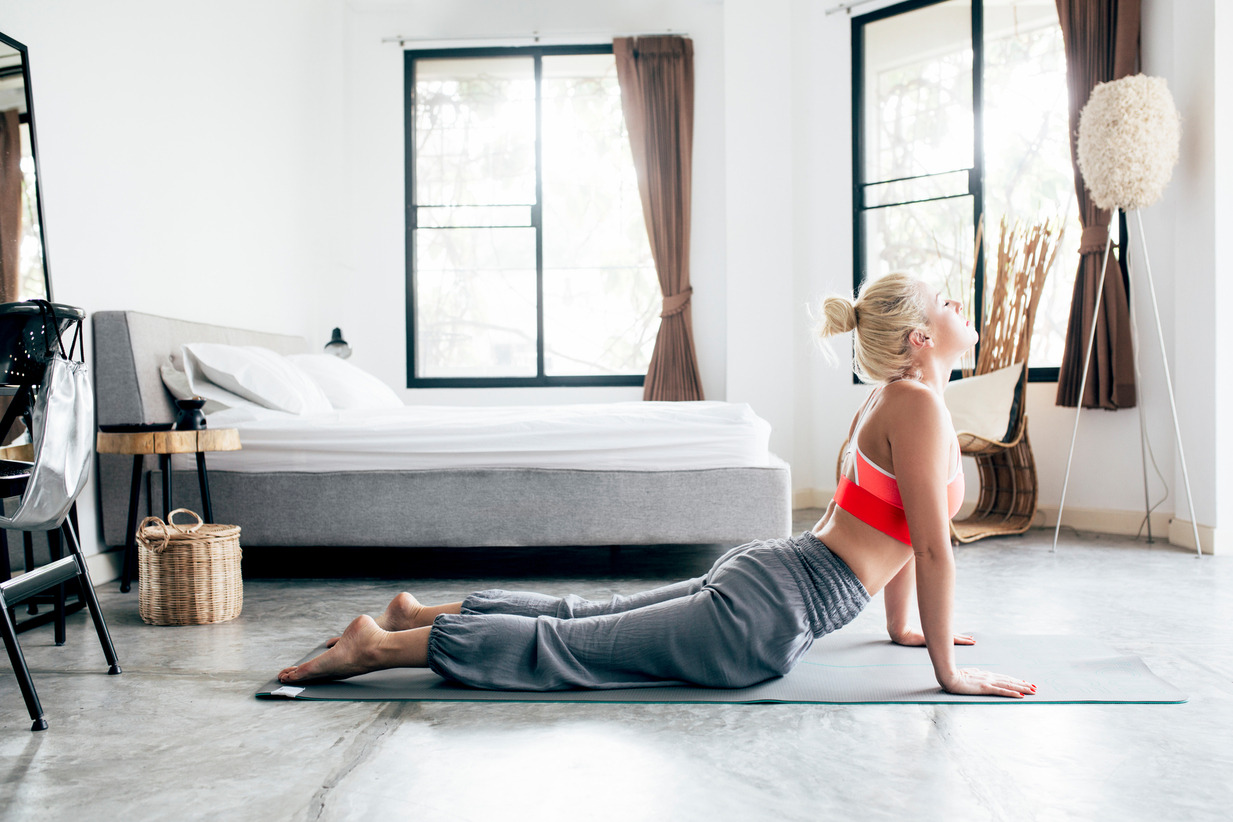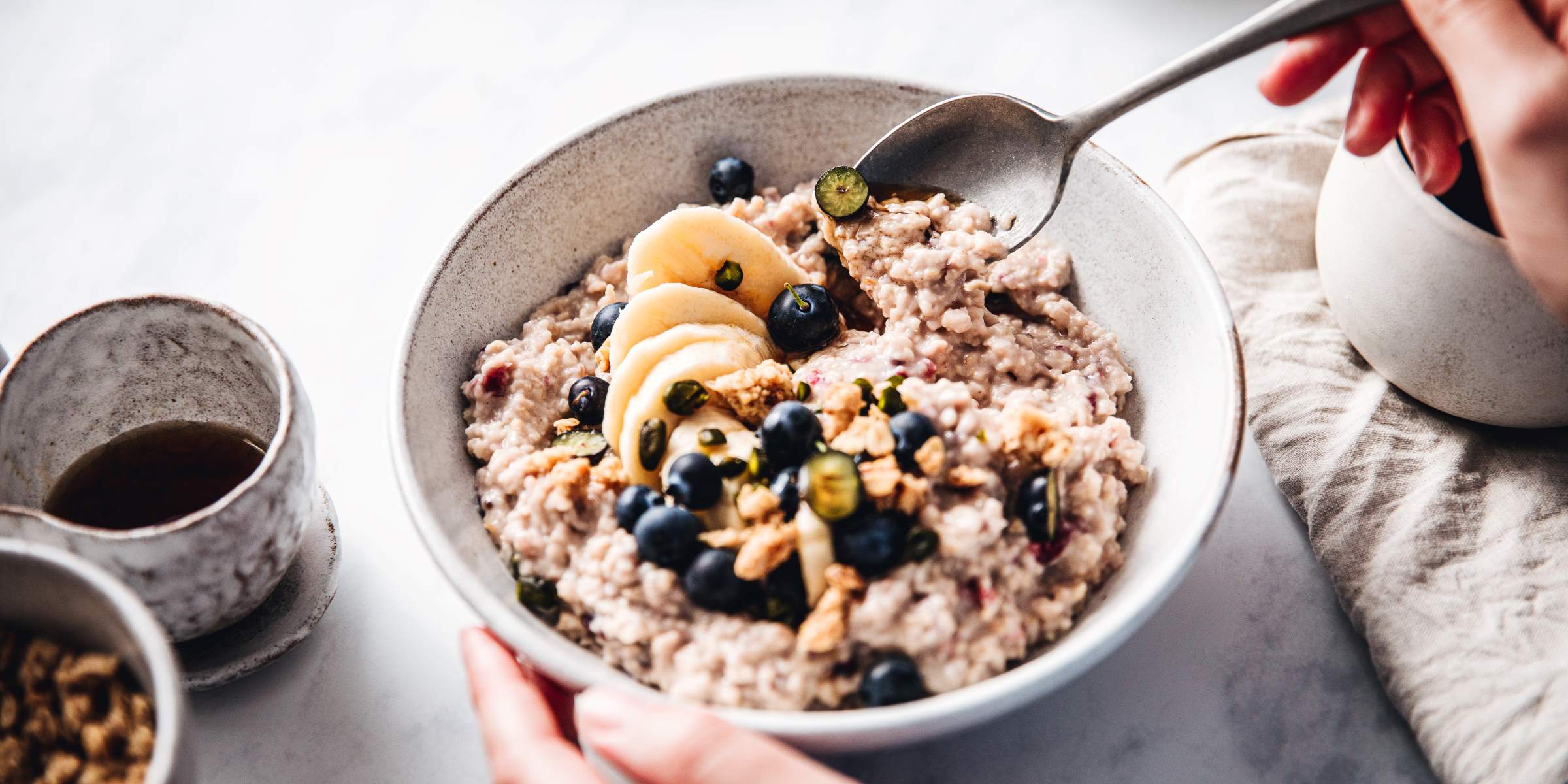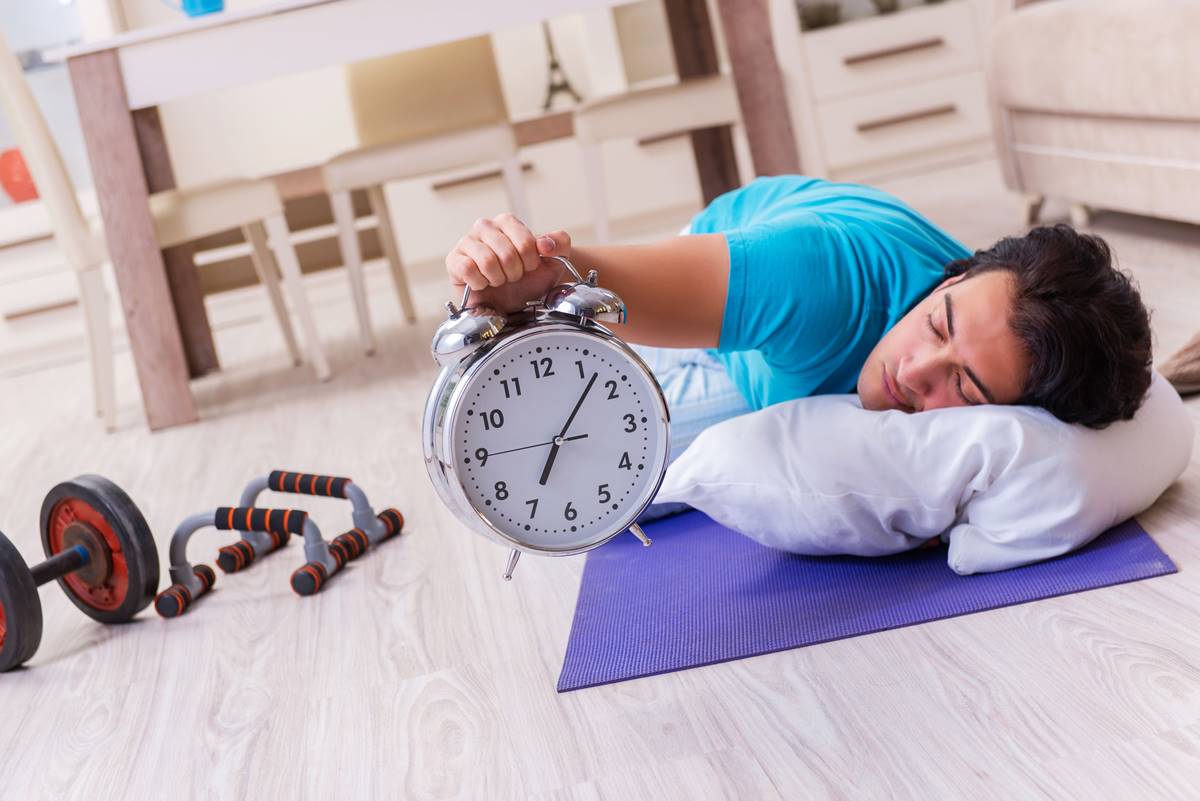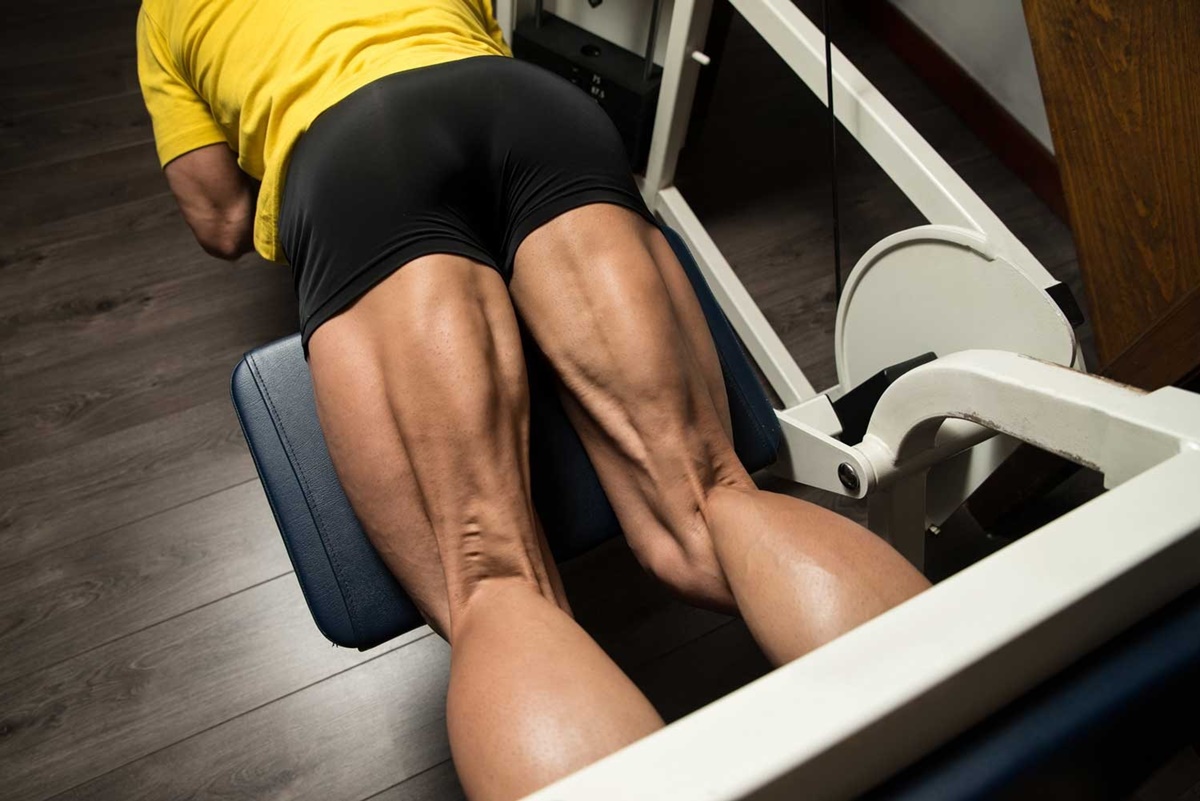

Featured
What Is The Good Morning Exercise
Published: September 29, 2023
Discover the benefits of the featured Good Morning exercise for a great start to your day. Improve posture, increase strength, and enhance overall performance.
Introduction
Welcome to our comprehensive guide on the Good Morning Exercise – an effective and versatile exercise that targets your posterior chain muscles. Whether you’re an athlete, fitness enthusiast, or someone looking to improve your strength and flexibility, incorporating the Good Morning Exercise into your workout routine can yield significant benefits.
Despite its name, the Good Morning Exercise has nothing to do with greeting the start of a new day. Instead, it is a compound exercise that primarily engages the muscles in your lower back, glutes, and hamstrings. It is performed by bending forward from the hip joint while keeping your back straight, just like a polite bow.
Initially popularized by weightlifters and powerlifters, the Good Morning Exercise has gained recognition in the fitness community as a valuable exercise for improving posterior chain strength and performance. However, it is essential to perform this exercise with the correct technique and form to avoid injury and maximize its benefits.
In this article, we will dive deep into the various aspects of the Good Morning Exercise, including its purpose, technique, benefits, precautions, variations, and how to incorporate it into your workout routine. So, let’s get started and unlock the potential of this fantastic exercise!
Purpose of the Good Morning Exercise
The Good Morning Exercise is a functional movement that serves multiple purposes for individuals seeking to improve their overall fitness. This exercise primarily targets the posterior chain muscles, which include the lower back, glutes, and hamstrings. By incorporating the Good Morning Exercise into your routine, you can achieve the following benefits:
- Strengthening the posterior chain: The Good Morning Exercise is exceptionally effective at targeting the muscles along the back of your body. This includes the erector spinae muscles in your lower back, the gluteal muscles in your buttocks, and the hamstrings in the back of your thighs. By consistently performing this exercise, you can enhance the strength and stability of these muscles, which are crucial for maintaining good posture, preventing lower back pain, and improving overall athletic performance.
- Improving hip mobility and flexibility: The hip hinge movement involved in the Good Morning Exercise helps to increase hip mobility and flexibility. As you bend forward from the hips, you stretch the hamstring muscles and improve their range of motion. This can be particularly beneficial for individuals who participate in activities that require explosive movements, such as sprinting and jumping.
- Enhancing core stability: The Good Morning Exercise engages your core muscles, including the abdominals and obliques, to stabilize your spine throughout the movement. This helps to improve core strength and stability, which is essential for maintaining proper posture, preventing back injuries, and enhancing overall athletic performance.
- Building functional strength: The Good Morning Exercise mimics real-life movements such as picking up objects from the ground or lifting heavy items. By strengthening the posterior chain muscles, you develop functional strength that translates to improved performance in everyday activities and sports.
- Correcting muscular imbalances: Many individuals have muscular imbalances between their anterior (front) and posterior (back) muscles, often due to prolonged periods of sitting and a lack of exercise targeting the posterior chain. The Good Morning Exercise helps to rebalance these muscle groups by focusing on the often-neglected posterior chain, promoting better posture and reducing the risk of injury.
These are just a few of the primary purposes of incorporating the Good Morning Exercise into your fitness routine. In the next section, we will delve into the technique and form required to perform this exercise effectively.
Technique and Form
Performing the Good Morning Exercise with proper technique and form is crucial to maximize its benefits and minimize the risk of injury. Follow these steps to ensure correct execution:
- Starting Position: Begin by standing with your feet hip-width apart, toes pointed forward or slightly outward. You can choose to use a barbell or dumbbells for added resistance. If using a barbell, place it on your upper traps (just below the base of your neck) and grip it with a shoulder-width overhand grip.
- Hip Hinge: Engage your core muscles, maintain a slight bend in your knees, and initiate the movement by pushing your hips backward, as if you are closing a car door with your behind. Keep your back straight and shoulders retracted throughout the exercise.
- Forward Lean: Continue hinging at the hips until your upper body is parallel to the floor or slightly above parallel. It is crucial to maintain a neutral spine position throughout the movement, avoiding excessive rounding or arching of the back.
- Return to Starting Position: Push your hips forward and squeeze your glutes as you return to the standing position. Focus on using your glutes and hamstrings to drive the movement, rather than relying solely on your lower back.

It is essential to keep in mind the following tips to maintain proper technique and form:
- Keep your core engaged throughout the exercise to stabilize your spine.
- Avoid rounding or arching your back, as this places excessive stress on the spinal discs.
- Do not use excessive weight that compromises your form. Start with lighter weights until you have mastered the proper technique.
- Perform the exercise in a controlled manner, feeling the muscles of your posterior chain engage.
- Do not let your knees cave in or excessively bend; they should remain stable throughout the movement.
- Breathe naturally throughout the exercise, exhaling as you hinge forward and inhaling as you come back to the starting position.
By paying close attention to your technique and form, you can safely and effectively perform the Good Morning Exercise, reaping its numerous benefits. In the next section, we will explore the advantages of incorporating this exercise into your fitness routine.
Benefits of the Good Morning Exercise
The Good Morning Exercise offers a wide range of benefits for individuals looking to improve their strength, flexibility, posture, and overall fitness. Let’s take a closer look at the advantages of incorporating this exercise into your routine:
- Strengthening the Posterior Chain: The Good Morning Exercise primarily targets the muscles in your lower back, glutes, and hamstrings. By regularly performing this exercise, you can develop increased strength and stability in these muscle groups, resulting in better posture, reduced lower back pain, and improved performance in various physical activities.
- Improving Hip Mobility and Flexibility: The hip hinge movement of the Good Morning Exercise helps to enhance hip mobility and flexibility. As you bend forward from the hips, you stretch the hamstring muscles and increase their range of motion. This can be especially beneficial for athletes and individuals involved in activities that require explosive movements, such as sprinting and jumping.
- Enhancing Core Stability: The Good Morning Exercise engages your core muscles, including the abdominals and obliques, to stabilize your spine throughout the movement. This helps to improve core strength and stability, which are essential for maintaining proper posture, preventing back injuries, and enhancing overall athletic performance.
- Building Functional Strength: The Good Morning Exercise mimics real-life movements like picking up objects from the ground or lifting heavy items. By strengthening the posterior chain muscles, this exercise helps develop functional strength that translates into improved performance in everyday activities and sports.
- Correcting Muscular Imbalances: Many individuals have muscular imbalances between their anterior (front) and posterior (back) muscles, often caused by prolonged sitting and a lack of exercise targeting the posterior chain. The Good Morning Exercise helps rebalance these muscle groups by focusing on the often-neglected posterior chain. This promotes better posture, reduces the risk of injury, and enhances overall muscular balance.
- Increasing Overall Strength and Power: The Good Morning Exercise engages multiple muscle groups simultaneously, promoting full-body strength and power development. This exercise helps increase your ability to generate force from your lower body, resulting in improved performance in exercises like squats and deadlifts.
- Enhancing Athletic Performance: By targeting the posterior chain and improving strength, flexibility, and power, the Good Morning Exercise can have a positive impact on athletic performance. Athletes across various sports, such as sprinters, jumpers, and weightlifters, can benefit from incorporating this exercise into their training regimen.
By regularly including the Good Morning Exercise in your workout routine, you can reap these numerous benefits and reach your fitness goals more effectively. In the next section, we will discuss some precautions and safety tips to keep in mind while performing this exercise.
Precautions and Safety Tips
While the Good Morning Exercise can provide numerous benefits, it is crucial to follow proper precautions and safety guidelines to minimize the risk of injury. Here are some important considerations to keep in mind:
- Start with Proper Warm-Up: Before performing any exercise, including the Good Morning Exercise, it is essential to warm up your body with dynamic movements and stretches. This helps prepare your muscles and joints for the upcoming workout, reducing the risk of strains or pulls.
- Master the Technique: Focus on mastering the proper technique and form of the Good Morning Exercise before progressing to heavier weights or higher repetitions. Performing the exercise with incorrect form can put excessive strain on your lower back and increase the risk of injury. Consider working with a qualified fitness professional to ensure you are performing the exercise correctly.
- Use Appropriate Weight: When adding resistance to the Good Morning Exercise, select a weight that challenges your muscles but still allows you to maintain proper form. Avoid using excessively heavy weights that compromise your technique and put you at risk of injury.
- Gradual Progression: If you are new to the Good Morning Exercise or strength training in general, start with lighter weights and gradually increase the resistance as your strength and technique improve. It is always better to progress slowly and safely rather than pushing too hard and risking injury.
- Listen to Your Body: Pay close attention to how your body feels during the exercise. If you experience any sharp pain, discomfort, or unusual sensations, stop immediately and consult a healthcare professional. Pushing through pain can exacerbate an existing injury or lead to new ones.
- Avoid Overtraining: Like any exercise, it is important to give your body adequate time to rest and recover between workout sessions. Overtraining can lead to fatigue, decreased performance, increased risk of injury, and burnout. Incorporate rest days into your routine and prioritize quality sleep for optimal recovery.
- Individual Limitations: Each individual has unique physical capabilities and limitations. Adapt the Good Morning Exercise to match your specific needs and listen to your body’s signals. If you have pre-existing back, hip, or knee issues, consult with a healthcare professional or physical therapist for guidance on modifications.
- Balance with Other Exercises: While the Good Morning Exercise is an effective exercise, it is important to include a variety of exercises in your routine to achieve overall muscular balance and prevent overdevelopment of certain muscle groups. Incorporating exercises that target the anterior (front) muscles, such as squats and lunges, will help maintain balanced muscular development.
By following these precautions and safety tips, you can minimize the risk of injury and optimize the benefits of the Good Morning Exercise. In the next section, we will explore variations and modifications of this exercise to cater to different fitness levels and goals.
Variations and Modifications
The Good Morning Exercise can be modified and adapted to meet the needs of individuals with varying fitness levels, goals, and equipment availability. Here are some variations and modifications you can incorporate into your routine:
- Dumbbell Good Morning: If you don’t have access to a barbell, you can perform the exercise with dumbbells instead. Simply hold a dumbbell in each hand, resting them on your shoulders or allowing them to hang at your sides. This modification allows for greater freedom of movement and can be useful for individuals with mobility restrictions.
- Resistance Band Good Morning: Using a resistance band adds accommodating resistance to the movement and can help challenge your muscles throughout the full range of motion. Secure the resistance band under your feet and hold the other end against your upper traps or shoulders as you perform the exercise. This variation is particularly beneficial for individuals focusing on improving hip mobility and flexibility.
- Single-Leg Good Morning: By performing the Good Morning Exercise on one leg, you increase the challenge to your stability, core strength, and balance. Stand on one leg and hinge forward from the hip while keeping your other leg extended behind you. This variation targets the glute and hamstring muscles more intensely and can help improve hip stability.
- Barbell Hip Thrust: The barbell hip thrust is a variation that targets the glute muscles specifically. Begin by sitting on the floor with a barbell across your hips. Lean against a stable bench or step, planting your feet firmly on the ground. Push your hips upward, squeezing your glutes, and then lower them back down. This exercise helps build glute strength and can be a great addition to your lower body workout routine.
- Bodyweight Glute Bridge: The bodyweight glute bridge is an excellent modification for beginners or individuals focusing on activating and strengthening their glute muscles. Lie on your back, bend your knees, and plant your feet firmly on the ground. Lift your hips upward, squeezing your glutes, and hold for a few seconds before lowering back down. This exercise can be performed anywhere and requires no equipment.
- Good Morning with Swiss Ball: By performing the Good Morning Exercise with a Swiss ball pressed against your lower back, you engage your core muscles even more. Place the Swiss ball between your lower back and a wall, then perform the Good Morning Exercise as usual. This modification adds an element of instability, challenging your core stability and strengthening the muscles of your posterior chain.
Remember to choose variations and modifications that align with your fitness level, goals, and equipment availability. Start with proper technique and gradually progress as your strength and confidence improve. As always, listen to your body and consult with a fitness professional or healthcare provider if you have any concerns or limitations.
In the next section, we will discuss how to incorporate the Good Morning Exercise into your fitness routine for optimal results.
Incorporating the Good Morning Exercise into your Fitness Routine
Now that you are familiar with the technique, benefits, and variations of the Good Morning Exercise, let’s explore how you can incorporate this exercise into your fitness routine:
- Warm-Up: Begin your workout with a dynamic warm-up routine to prepare your muscles and joints for the upcoming exercise. Incorporate movements like leg swings, hip circles, and bodyweight squats to increase blood flow and activate your lower body muscles.
- Main Exercise: Include the Good Morning Exercise as one of your main exercises in your lower body or full-body workout routine. Perform 3-4 sets of 8-12 repetitions, focusing on maintaining proper form and engaging your posterior chain muscles. Gradually increase the weight or resistance as you become more comfortable and stronger with the movement.
- Superset: Pair the Good Morning Exercise with a complementary exercise to create a superset. For example, alternate between sets of Good Mornings and Romanian Deadlifts or Step-ups. This helps to maximize your lower body workout and increase overall muscle engagement.
- Circuit Training: Incorporate the Good Morning Exercise into a circuit training routine. Combine it with other compound exercises like squats, lunges, and push-ups to create a full-body workout. Perform each exercise back-to-back with minimal rest in between for a challenging and efficient workout.
- Accessory Exercise: Use the Good Morning Exercise as an accessory exercise to target specific muscles. For example, if you are working on strengthening your hamstrings, perform the Good Morning Exercise after your main hamstring exercise like the Deadlift or Leg Curl. This allows you to further work those muscles in a focused manner.
- Active Recovery: The Good Morning Exercise can also be used during active recovery days. Perform lighter sets with a focus on form and mobility to promote blood flow, aid in recovery, and prevent muscle imbalances.
- Weekly Frequency: Aim to incorporate the Good Morning Exercise into your workout routine 1-2 times per week. This frequency allows for adequate rest and recovery while still reaping the benefits of the exercise. Adjust the frequency based on your individual goals and fitness level.
Remember to listen to your body, progress at your own pace, and make adjustments as needed. If you have any existing injuries or limitations, consult with a fitness professional or healthcare provider for personalized guidance.
Incorporating the Good Morning Exercise into your fitness routine will not only strengthen your posterior chain muscles but also improve your overall strength, flexibility, and posture. Enjoy the challenge and the rewards this exercise brings to your fitness journey!
Conclusion
The Good Morning Exercise is a versatile and effective movement that targets the muscles of the posterior chain, including the lower back, glutes, and hamstrings. By incorporating this exercise into your fitness routine, you can reap numerous benefits such as improved strength, flexibility, core stability, and functional performance.
Throughout this comprehensive guide, we have explored the purpose of the Good Morning Exercise, its technique and form, the benefits it offers, precautions to take, variations and modifications to suit different needs, and how to incorporate it into your fitness routine. By following proper technique, gradually progressing, and listening to your body, you can safely and effectively integrate this exercise into your workouts.
Remember, it is important to warm up properly, focus on mastering the technique, and adjust the exercise to your individual abilities and goals. Whether you are a beginner or an experienced athlete, the Good Morning Exercise can be adapted to challenge and strengthen your muscles according to your fitness level.
As with any exercise, consistency and patience are key. Develop a routine that includes the Good Morning Exercise and stick to it. Over time, you will notice improvements in your strength, flexibility, posture, and overall fitness.
If you have any concerns or existing injuries, consult with a qualified fitness professional or healthcare provider before performing the Good Morning Exercise. They can provide personalized guidance and ensure that you are performing the exercise safely and effectively.
So, go ahead and incorporate the Good Morning Exercise into your fitness routine. Embrace the challenge, enjoy the benefits, and unlock the potential of your posterior chain muscles. Here’s to a stronger, healthier, and fitter you!









